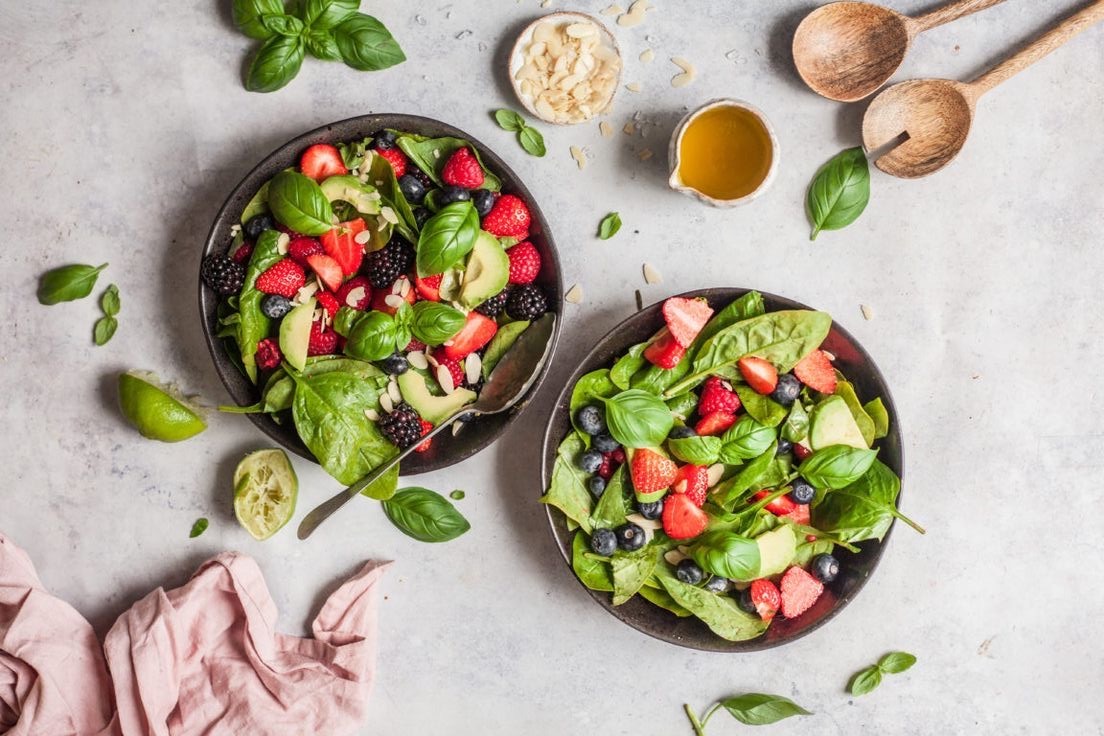From Paleo to Keto diet and everything in between, it seems there’s always a new ‘fad’ diet plan touting its ability to burn fat and drop kilograms. Enter, diet culture: the belief system that focuses on and values weight, shape, and size over wellbeing. This toxic trend has a way of making us feel guilty for eating certain things and looking a certain way.
It’s especially prevalent during the summer months, where we find ourselves indulging at Christmas and New Year celebrations. So, how exactly can you ditch diet culture and restore a happy relationship with a healthy diet and exercise?
You’ll also like this:
The Natural Magic of Fermented Foods
What Is The Best Food for Gut Health And 5 Top Tips From Nutrition Expert, Recipes, and More…
Top Food Intolerances you Might Have and How to Find Out
Why To Ditch Your Diet Plan?
Amazonia’s Head Dietitian, Tara Kaff shares her top 5 tips for adopting an intuitive mindset that will benefit both your physical and mental wellbeing.
Tara is an Accredited Practising Dietitian and Sports Dietitian, she has a passion for developing healthy recipes, food photography and, of course, developing new products at Amazonia that will enhance individual wellbeing and performance.
1. Stop Counting Calories
Not all calories or bodies are created equal, and different diets with the same number of calories can have vastly different health outcomes depending on the nutrient density of the calories, and on the genetics of the individual. Rather than tracking calories – which can be seriously discouraging and have a negative impact on mental wellbeing – I encourage you to focus on the nutrient density of your meals instead. By doing so, you can experience benefits ranging from increased energy and natural weight loss to healthier hair, skin and nails. Basically, don’t spend 95% of your life trying to weigh 5% less.
2. Go Back to Basics
Food and nutrition has become so over-complicated that we’ve forgotten what’s actually important – that food is there to be enjoyed in moderation rather than be restricted. When in doubt, go back to the basics. An easy way to build a balanced meal is to include foods from at least 3 food groups (vegetables, fruits, grains and protein) to ensure you’re nourishing your body with essential macronutrients.
For example, her go-to breakky is a smoothie with banana, spinach, almond milk, nut butter, and Amazonia Raw Protein Paleo Fermented in Salted Caramel Coconut flavour. It’s a delicious grain-free and easy-to-digest blend with up to 50% RDI Iron plus certified organic pea protein, Sacha Inchi, spirulina, spinach, quinoa, seeds, digestive enzymes and more.
3. Learn to Eat Intuitively
Intuitive eating means feeding your body when it’s hungry. Essentially, it’s the opposite of a traditional diet, which imposes guidelines about what to avoid and what or when to eat. Benefits associated with intuitive eating can include higher HDL (“good”) cholesterol levels, lower rates of emotional eating and disordered eating, and improved body image and self-esteem.
Start by asking yourself if the hunger you are experiencing is physical or emotional. If it’s the latter, do something to distract yourself, such as going for a walk in nature or calling a friend. And when you sit down to eat, chew slowly, pay attention to how the food tastes and listen for the signals of comfortable fullness – don’t wait until you’re stuffed.
4. Embrace Plant-Based Wholefoods
Eating a variety of unprocessed fruits, vegetables, wholegrains and legumes is key when it comes to maintaining a healthy, balanced diet. Rich in unsaturated fats, vitamins, minerals, fibre and protein, plant-based diets have been shown to help improve gut health, reduce inflammation, and may lower your risk for heart disease, high blood pressure, stroke, diabetes and even cancer.
You want to aim for at least five handfuls of colourful veggies and two handfuls of fruit per day to ensure you’re getting a range of vitamins, minerals and phytochemicals. To maintain good digestion and stay fuller for longer, eat a variety of high-fibre foods such as chickpeas, lentils, vegetables and wholegrains.
5. Move Your Body Every Day
Exercise shouldn’t be something you dread or only do because you feel like you have to – it should be something that makes you feel good! Great for both your physical and mental health, exercise can help lower blood pressure, blood sugar and cholesterol, and reduce your risk of heart attack, cancer and stroke. Summer is the perfect time to soak up some vitamin D with endorphin-boosting outdoor exercise. This doesn’t mean you have to start training for a marathon. Whether you walk, swim, bike, run or just play some outdoor sport with the kids – try to make the most of the warmer months with an activity that you find gratifying and enjoyable.
You’ll Also Like This
It’s Not The Same Thing…The Truth About Plant-Based Foods by Susie Burrell
The Expert Talks: 7 Benefits of Juicing Celery
Why a Chiropractic Visit is Just Like Taking a Multivitamin Supplement?
General FAQS
What is a good diet plan?
1. Emphasizes vegetables, fruits, whole grains, and fat-free or low-fat dairy products.
2. Includes lean meats, poultry, fish, beans, eggs, and nuts.
3. Limits saturated and trans fats, sodium, and added sugars.
4. Controls portion sizes.
diet plan diet plan diet plan diet plan diet plan diet plan diet plan keto diet diet doctor healthy diet fad diets







